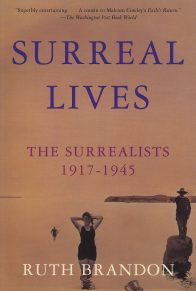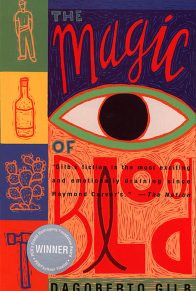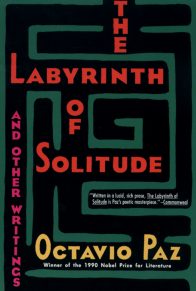Two men were walking up the rue Didot, in the fourteenth arrondissement of Paris. They were schoolfriends, barely twenty years old. They moved quickly along the pavement without exchanging a word.
The walls of the Broussais Hospital came into sight on their left. They went under the archway and followed paths leading from one building to another until they reached a long, narrow room where they were asked to wait. The man they were looking for, a man who had been in prison several times, wasn’t there.
They asked for him. They were told again to wait. Finally, a nurse led them to a very large room containing six iron beds arranged on either side of a window looking out on the garden.
The man they had come to see was in one of the middle beds, just to the right of the window.
His name was written on a little sign above the pillow. He had grey hair, faun-like eyes, a broad forehead, and a beard grown wild. He wore a patient’s cap and a rough-spun shirt with the hospital’s name marked on it.
The two visitors introduced themselves. The man in bed hoisted himself up on one elbow, looked at them, and cleared the bed of the newspapers and books that were strewn all over it. He rose. Putting on an old pair of trousers, a stained cardigan, and a hospital robe, he led his visitors into the hallway, knotting the belt of the robe as he went.
They walked quickly towards the courtyard. There, for over an hour, they exchanged confidences, paying no attention to the sickly old people passing by, who stared at this strange trio composed of two students, firmly ensconced in their world, and this patient who looked like a tramp.
The three men said goodbye to each other.
A year later, the man had left the Broussais Hospital. One day in a Montmartre street, as he was walking with some difficulty, leaning on a cane, he ran into one of his young visitors of the previous year. He didn’t recognize him. The young man introduced himself. They spoke for a moment.
“Will you buy me a drink?” the former convict asked. He pulled out a slim wallet and opened it, explaining that all the money he had in the world was right there. There were only a few coins … He also said that a waiter, who had found him too shabbily dressed, had just thrown him out of the bistro where he had been sitting.
They entered a caf” and ordered a drink.
“Where are you living?” asked the student.
The other man shrugged his shoulders sadly. “I don’t really live anywhere, I move around…”[1]
Thus spoke the poet, not at the end of the twentieth century but at the end of the nineteenth. The homeless man was Paul Verlaine. The two young men who went to see him were Pierre Lou’s and André Gide. Today, Verlaine would be sleeping in the Métro.
Poverty has a long and stubborn life.
THE MAZE OF MONTMARTRE
Right at the top of the hill of Montmartre rises
the Basilica of Notre Dame de la Galette. This
astonishing edifice, one of the scandals of our
times, mocks Paris even as it dominates her –
material evidence of the power of the priests.
Le Pére Peinard, 1897
As the century began, Montmartre and Montparnasse faced each other from afar: two hills which would be the birthplaces of the worlds of yesterday and today. Two shores of Haussmann’s river; by constructing his buildings and avenues for the solid bourgeois class, the illustrious city planner pushed the troublesome white proletarian population to the city’s outskirts: an old method for conserving the centre.
On the right bank was the Bateau Lavoir, on the left, the smoke-filled evenings of the Closerie des Lilas. Between the two flowed the Seine. And the entire history of modern art.
Montmartre had its Sacré Coeur, a kind of Byzantium-on-the-Seine. A block of white that rose and rose above the windmills, the vines, and the gardens.
Monsieur Thiers had set the ball rolling. By provoking Montmartre, he brought about the Commune. The Parisians have conserved the city cannons which were used there. And it is clearly not by chance that the Sacr” Coeur was constructed on the exact spot where the Commune was launched: the church would force the people to pay for their revolutionary sins.
The basilica is enthroned above obscure hotels, riotous cabarets, flimsy shacks made of wood or tarred-over cardboard which seem to be marching up the side of the hill amid garlands of lilac and hawthorn. In the midst of this unruly maze, Isadora Duncan and her young students danced Greek-style, in bare feet and tunics, with carefree hearts. Montmartre was a village. One could sing, dance, eat and sleep there, all very cheaply. The private homes of the Avenue Junot had not yet been built. The houses of prostitution on the rue d’Amboise offered free dinners. The swishing skirts of La Goulue and the swaying hips of Rayon d’Or still made men swoon, and the footwork of Valentin le D’soss’ entranced audiences.* A notary’s assistant by day and a dancer by night, he was the only man in the troupe of the Quadrille R’aliste, and his amazing agility thrilled the public of the Elys’e-Montmartre, soon to be succeeded by the up-and-coming Moulin Rouge.
Bruant provoked the middle classes. Satie “gymnopédized” at the Chat Noir, on the Boulevard Rochechouart, where Alphonse Allais was making his début. Rodolphe Salis directed the orchestra. Fifteen years before the turn of the century, this establishment disappeared, to be replaced by the Mirliton, while the paper Le Chat Noir continued to strike in every direction with its satirical claws. Allais went so far as to dip his pen in the inkwell of a more famous name: he signed his articles using the pseudonym Francisque Sarcey, who was a very real theatre critic, alive and well and writing articles which were widely followed in the review Le Temps. Another practical joke … As for Jane Avril, the poet’s mistress, she posed for Toulouse-Lautrec. Lautrec was a Montmartre painter, but he was not the first. The famous artists whose ghosts already peopled the cobbled streets of the neighbourhood were legion: G”ricault, C”zanne, Manet, Van Gogh, Moreau, Renoir, Degas ” Those to come had not yet made names for themselves. They were only shadow figures for the time being. Momentarily holding their breath, they were learning in the museums, setting up shop wherever they could find a place, and awaiting their hour of glory. First in Montmartre, then in Montparnasse, and later, if the museums relayed their fame, throughout the world”
Was it out of self-protection, to cultivate its individuality, that Montmartre decided to fashion itself into a free commune? This may seem to have been not much more than a joke, and there was an element of that in it. But there was much more. There was also a desire for singularity, for liberty which, at the dawn of the century, led some of the area’s residents to decide that the Place du Tertre should become the capital of an autonomous territory.
A vote was held. The proposal was passed by an absolute majority. Next, a mayor was elected. Jules Depaquit, illustrator by trade, was chosen as the first administrator of the Free Commune of Montmartre. He had earned the respect of his fellow citizens a few years earlier by having been dragged to the Prefecture of Police, after rumours that he was the author of the attack on the V”ry restaurant on the Boulevard Magenta.
Although cleared of the charge – the true authors of the crime were anarchists out to take revenge for Ravachol,* who had been arrested at a table in the establishment – Depaquit had gained fame from it. This would be further enhanced by the election, and soon he was being toasted in song by Francis Carco, praised by Roland Dorgel’s, and admired by Nino Frank and Tristan Tzara, who saw him as one of the precursors of the Dada movement. He would also charm Picasso, who often came to listen to him recite poetry at the Lapin Agile.
Jules Depaquit left behind a script which Satie set to music for the Com’die Parisienne, and which was adapted for the theatre by Darius Milhaud and danced by the Ballets Russes in 1926, with a set by André Derain. Entitled Jack in the Box, this pantomime showed a man carrying a big clock, criss-crossing the stage over and over, without anyone being able to fathom what his role was. This was only revealed at the end of the last act: the man was a clockmaker.
Depaquit made a living by selling satirical drawings to newspapers that specialized in this art. He squandered all his earnings in bistros, which he would enter standing upright, and leave falling over himself. He had a very precise schedule: he would work like a devil for a week, and party for the next three. History does not tell us which of these phases gave rise to the brilliant and eminently political idea of obtaining the independence of his people, and the separation of Montmartre from the French state.
He preached the merits of this new statute in a thousand other communes, located for the most part in the Seine-et-Oise region near Paris, to which he was invited as the Minister Plenipotentiary of a nation in the process of being born. On the programme: wine and brass bands.
Within the boundaries of his own territory, Jules Depaquit had perfected an infallible method for getting free drink. When he was out of cash, he would enter a caf”, sad and tired, his coat on his back, suitcase in hand. He would be asked:
“Where are you going, M. Depaquit?”
“I’m returning to my country.”
“And where is that, your country?”
“Sedan.”
“Sedan! That far?”
“That far… Now you see why I’m so sad””
Together they would despair. A bottle would be produced for consolation, and would be emptied to help cheer them up. When all had almost been forgotten, Jules Depaquit climbed onto the tables and shouted:
“Prussia invaded Sedan, but Montmartre will resist!”
And the troops of the Tertre were toasted for their bravery.
Generally, they had abdicated by the time dawn came, after having abundantly watered their furrows. But Depaquit, cheered on by his partisans, could not bring himself to capitulate. He was not Napoleon III.
One exception, perhaps, was the day on which all of Montmartre took up arms and donned the uniforms of the soldiers of 1870 to defend Francisque Poulbot, the Butte’s painter of street urchins. Poulbot loved parties and parades. Each year, in order to console his girlfriend for the fact that they had not yet tied the knot, he organized a fake marriage that was attended by all the residents of the neighbourhood. Everyone wore a disguise for the occasion, then for the rest of the night, they danced, drank, and applauded the bride.
Poulbot got involved in a dispute with his landlord, who wanted to evict him. The painter called on his friends for help. He suggested they all don the uniform of the armies which had defended a besieged Paris before the violent explosion of the Commune, and that they barricade themselves in his lodgings, ready to show the landlord that it would cost him dearly to get at Poulbot.
The villain threw in the towel before the fatal hour. But Poulbot maintained the fraternal summons. And so, on the planned day, the streets and alleys of Montmartre filled with a battalion of cavalrymen, zouaves, lancers, artillerymen and associates, all armed with rifles and dressed in martial attire. If Roland Dorgel’s is to be believed, late in the night the Montmartre troops were joined by soldiers from the National Guard, who arrived from Montparnasse dressed in a similar way and carrying tapered bayonets, which astounded the real policemen posted along the path of these fake soldiers, marching solemnly in rhythm.
The patrons fanned out onto the boulevards, taking aim at passers-by streaming out of movie theatres. They played at war until dawn. The armistice was signed after the troops of General Poulbot, sabres drawn and bugles trumpeting, had attacked the Moulin de la Galette.
The games and provocations of this merry band attracted tourists and curious onlookers, who drifted in from the boulevards in their top hats and waistcoats. Fortunately, the horse-drawn omnibus didn’t go all the way up the Butte Montmartre but stopped at the Place Blanche, and there remained a long climb, through steep and narrow alleyways, up to the centre of the festivities.
Montmartre remained a place apart, protecting its singularity. It had its admirers, members of the same family – a family that hadn’t yet revealed its younger branch, who would be more interested in the cross-pollination of the arts. The eldest of these would be named Pablo Picasso, Andr” Salmon, Max Jacob and Guillaume Apollinaire”
For the moment, Depaquit and his friends were the leaders. Perched on caf” tables, Carco sang the “marseillaise”, and Mac Orlan roused his pals by playing the bugle under their windows. They were all anarchists at heart. They ate, but not well, drank more than the average, slept here and there, wherever they could find a place, though not yet in the Métro, whose north-south line now joined Montmartre to Montparnasse. Their identity papers were not always in order, their address was not always permanent, and they occasionally stretched out a hand to beg. Some of them painted canvases which hardly sold, some made music, many were highly skilled in the art of eating off their neighbour’s plate. But the neighbours were generous, and let them run up a bill without asking too many questions. On the stoves of the bistros, pots were kept boiling and stews ladled out for customers fallen on hard times: a kind of precursor of the latter-day soup kitchen. There, painters and poets drank toasts with the many free spirits who, at the beginning of the century, roamed the streets of Montmartre.
Of course, chance alone cannot explain their all finding themselves together in this particular neighbourhood, on the outskirts of the city, not far from the main boulevards. The steep, winding streets, which had seen hand-to-hand combat, housed men, newspapers, and a collective memory. The anarchist Libertad conducted his popular public talks on the rue Muller. The paper L”Anarchie, which had neither director nor editor-in-chief and whose moral and typographical code prohibited the use of capital letters, set up shop on the rue du Chevalier-de-la-Barre. The Libertaire was on the rue d”Orcel. Its editors met their friends and readers in the back room of the Zut, a caf” on the rue Norvins that the police were soon to close, to protect the ears of the state from the subversive talk of the cafe’s regular customers. Stinlen, a Swiss painter who designed the Chat Noir posters, went elsewhere to preach his doctrine of coming revolution. And M. Dufy would soon have a police record for sheltering a fellow painter whose palette was daubed with the incendiary colours red and black.
In the years before the First World War, Juan Gris was pursued by the police and temporarily jailed, having been confused with Garnier, as central a fixture in Bonnot’s band* as he was a target in the sights of the police. Pierre Mac Orlan, pedestrian and chronicler of the Butte, in his classic film Quai des brumes gives an electrician a task which the libertarians of the maquis often carried out: that of forging false identity papers. He helps out a deserter from the Colonial Army who has come to get a new identity. His gesture is accompanied by words that epitomize that time and place. “I’ve been spotted by the cops because of something that happened with an anarchist paper…”[1]
Signac, Vallotton and Bonnard participated in lotteries in which their works were auctioned off for the profit of the Révolté, a free-thinking paper founded by Elis’e Reclus and Jean Grave. Van Dongen, a friend of the anarchist writer Félix Fénéon, also participated. In 1897, he illustrated the Dutch translation of a work by Kropotkin, Anarchy, Its Philosophy and Ideals. And Vlaminck, loud and clear, trumpeted some rather devastating personal opinions – with no restrictions, and with some rather disturbing variations, alas, during the Occupation.
But the anarchists and the artists, however much they may have shared the same ideals, did not join forces when it came to acts of violence. The painters and poets didn’t play around with the infernal machines of those who planted bombs. But they would often defend them. And they were always the first to cheer at games, farces, practical jokes, provocations and mayhem of all kinds. They too turned their back on the cosy, honeyed and well-ordered comfort of bourgeois homes. In Montmartre, as later in Montparnasse, the artists remained resolutely opposed to the perfect geometry of well-ordered structures. They were, quite simply, rebels.
Excerpt from Bohemian Paris
©1998 by Dan Franck. Translation
©2001 by Cynthia Hope Liebow. Reprinted with permission from Grove Atlantic, Inc. All rights reserved.













